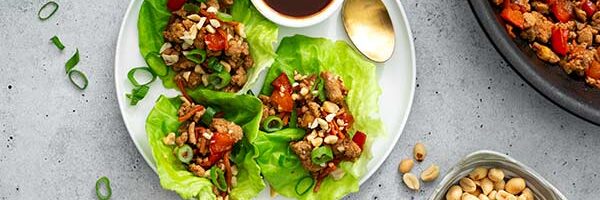
Dealing with Pain Naturally
We all have to deal with pain at one time or another. A common response to deal with pain is to use prescription drugs or over the counter medications, but there are several natural alternatives that can be used safely as a part of everyday pain maintenance.
There are several classifications of pain. From a simple or practical standpoint, I prefer to divide these into three main categories.
- Inflammatory pain such as arthritic pain, where pain is elicited and enhanced by inflammatory reactions.
- Neuropathic pain, pain caused by damage (e.g. nerve trauma or chemotherapy drugs) or disease (e.g. diabetes or spinal stenosis) affecting the somatosensory nervous system, including peripheral and central nervous systems. Neuropathic pain is associated with abnormal sensations or normally non-painful stimuli-evoked pain.
- Visceral pain, pain of internal organs, such as abdominal pain caused by irritable bowel syndrome, inflammatory bowel disease, functional dyspepsia, functional abdominal pain syndrome, infantile colic, and interstitial cystitis among others.
There are no ‘cookbook’ recipes to control pain naturally. However, there are quite a few natural products successfully used by physicians and health care practitioners for pain control.
Here are some supplements, which we use in our clinic for pain control.
- Omega-3 fatty acids such as EPA (eicosapentaenoic acid) and DHA (docosahexaenoic acid), frequently found in fish oil, are mainly used to control inflammatory pain. Fatty acids influence inflammation through a variety of mechanisms. Many of these are mediated by, or at least associated with changes in fatty acid composition of cell membranes leading to changes in cell signaling and reduction of gene expression encoding proinflammatory molecules.
- Curcumin is a biologically active polyphenolic compound found in turmeric, a spice derived from the rhizomes of the plant Curcuma longa. It is mainly used to control inflammatory pain. Curcumin has been shown to inhibit mediators of the inflammatory response, including cytokines and chemokines.
- Boswellia is an herbal extract made from the resin of the Boswellia serrata tree. It is also known as frankincense. Boswellia is used to control pain due to inflammation. To improve pain-relieving activity, boswellia is frequently combined with curcumin.
- Cannabidiol (CBD) typically comes from the plant Cannabis sativa and influences a number of receptors. It interacts primarily with the endocannabinoid system, but the signaling is not completely understood. It can be used for both inflammatory and neuropathic pain.
- Sinomenine is a rare anti-inflammatory and pain-relieving substance. Purified from the roots of the plant Sinomenium acutum, Sinomenine is traditionally used in China and Japan for treating rheumatism and arthritis.
- Baicalin is a bioflavonoid isolated from Scutellaria baicalensis. Baicalin covers a broad spectrum of anti-inflammatory and neuropathic activities.
- Devil’s Claw, or Harpagophytum procumbens, is a perennial plant native to the Kalahari Desert. The tubers of the plant exhibit strong anti-inflammatory properties attributed mainly to the content of iridoid glycosides, i.e., harpagide and harpagoside, and hence are considered an alternative to the non-steroidal anti-inflammatory drugs (NSAIDs).
- Cat’s Claw, or Uncaria tomentosa, is a woody vine found in the tropical jungles of South and Central America. The plant root bark is used in herbalism for a variety of ailments, including pain and inflammation control.
- Sigesbeckia orientalis, commonly known as Indian weed, is a species of flowering plant in the family Asteraceae widespread in Asia, Africa and Australia. Siegesbeckia orientalis extract has significant inhibitory effects on local and systemic inflammation and inflammatory pain.
- Agmatine is a natural derivative of the amino acid, arginine. Agmatine has been shown to exert modulatory action at multiple molecular targets, including neurotransmitter systems, ion channels, nitric oxide (NO) synthesis, and polyamine metabolism. It is frequently used as a natural remedy to control neuropathic pain.
- GABA, or gamma-aminobutyric acid, is the chief inhibitory neurotransmitter in the mature central nervous system. Its principal role is reducing neuronal excitability throughout the nervous system via binding to GABA receptors. Respectively, GABA can be used for control of neuropathic and, to a lesser degree, inflammatory types of pain.
- Palmitoylethanolamide, or PEA, expresses strong activity toward neuropathic and to a lesser degree toward inflammatory pain. PEA preserves peripheral nerve morphology and helps with conditions associated with chronic nerve inflammation. In our practice, we frequently observe strong pain-relieving effect upon co-administration of PEA and GABA.
Several final remarks.
This is not an exhaustive list of the natural products capable of controlling pain. These are the items we use in our practice.
Typically, the most beneficial pain-relieving effect is achieved upon using several natural remedies together or combining natural remedies with prescription drugs.
In order to achieve maximum benefits, you should find a physician or health care practitioner who is knowledgeable in prescribing natural remedies for pain control and who has the skills to monitor potential side effects and beneficial outcomes.
For people suffering from gluten intolerance or celiac disease, it is important to remember that just because a product is naturally gluten-free, any fillers may not be. Therefore, you should use supplements which are certified gluten-free. Gluten-Free Remedies www.glutenfreeremedies.com offers a broad variety of gluten-free certified natural supplements.



